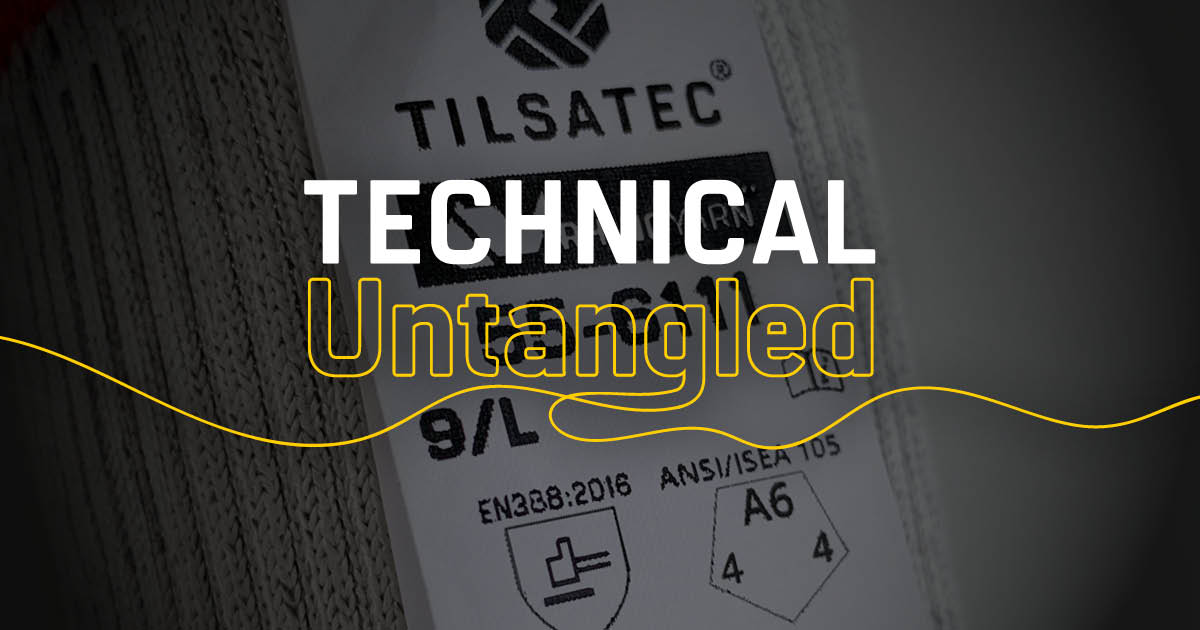Technical Untangled: ANSI/ISEA 105-2024 Labelling Guidelines

The 2024 standard introduces a new pentagon-shaped pictogram, providing a clear visual representation of a glove's performance in abrasion, cut, and puncture resistance together in one single pictogram.
Specific Marking
Hand and arm protection shall be marked per the pictograms. Markings shall be affixed so as to be visible and legible throughout the normal useful life of the glove. The following convention shall be applied, where applicable classifications are claimed:
-
a. Cut -resistance (inside center)
-
b. Abrasion resistance (inside left)
-
c. Puncture resistance, non-hypodermic needle (inside right)
The designation X shall be applied where a classification claim is not being made for the given performance attribute.
If marking on the glove is not possible given the characteristics of the product, the marking shall be affixed to the packaging, or any document supplied with the glove.

What is the benefit of making those changes?
According to ISEA, the new ANSI/ISEA 105-2024 American National Standard for Hand Protection Classification brings uniformity to how manufacturers display a glove’s levels of protection. The new approach to product labelling allows buyers and end users to instantly recognize whether a particular glove or sleeve is suitable for the task in hand by encasing them within one symbol.
The Importance of choosing the correct hand protection for specific needs
The Occupational Safety and Health Administration (OSHA) reports that 71% of hand injuries could be prevented with personal protective equipment (PPE), specifically safety gloves.
However, 70% of workers do not wear any protection, and among those who do, 30% do not use the appropriate gloves for the task. Hands are exposed to a wide range of hazards in the workplace, not only due to the work being performed but also to the materials handled and the machinery operated. Common hand injuries in the workplace include punctures, lacerations, cuts, burns, and many others.
There are several reasons workers choose not to wear gloves even when they are supposed to including;
- Discomfort
- Lack of awareness
- Perception of low risk
- Difficulty to perform tasks while wearing the gloves
Selecting the correct gloves for your needs is vital and a decision that can affect thousands of workers. However, it can be a complex exercise with many factors to consider and numerous options available. It's the responsibility of our representatives to help guide you through the process which typically includes a comprehensive hand protection site survey that is conducted to understand the hazards involved in each department and what challenges and risks they face. They then provide recommendations on appropriate solutions for each department.
For more insight and guidance on hand safety and working with our team, schedule a free consultation or download our latest hand protection guide.








